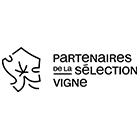Legislation

Index
- a. GEVES, the French Variety and Seed Study and Control Group
- b. CTPS, the Permanent Technical Committee for Plant Breeding
- c. The Vine Section of the CTPS
- d. FranceAgriMer, the designated authority for the certification of vine cuttings and plants
- e. FranceAgriMer Specialist Council for Wine and Cider
- f. FranceAgriMer Sector Committee for Vine Cuttings and Plants
- g. INOV, the National Office for Plant Breeders’ Rights
I. Official Catalogue of Vine Varieties
The Official Catalogue of Plant Species and Varieties Cultivated in France for vines, called the “Official Catalogue of Vine Varieties”, is the list of varieties of which the propagating material may be marketed within the European Union. The Catalogue is made up of a list A, the main list, and a list B of varieties where the material may be produced in France solely with a view to export to third party countries. A variety must be registered in at least one catalogue of a Member State to be authorised for propagation and marketing in France and throughout the European Union (EU).
Member States notify the content of their national catalogues to the European Commission and the compiled results of this are represented in the Common Catalogue.
This Catalogue was initially defined by Directive 68/193/EEC, which aimed to harmonise existing national laws on the marketing of grapevine vegetative propagation material. It provides the main names and officially recognised synonyms and lists the principal morphological and physiological characteristics allowing the different varieties to be distinguished from one another.
Further information :
a. Registration process of a variety in the Catalogue
- A variety is officially registered by an order of the Ministry of Agriculture on the basis of a recommendation by a consultative committee: the Vine Section of the Permanent Technical Committee for Plant Breeding (CTPS).
- To be registered, a variety has to meet two technical conditions:
- Registration of a grapevine variety in the Catalogue is of unlimited duration, unlike the registrations in the catalogues of other species. The applicant must pay the registration fee and a maintainer, who is responsible for maintaining the variety in accordance with the official description, is officially designated for each listed variety. The maintainer of newly created varieties must also pay an annual maintenance fee to the Catalogue.
b. Clone certification process
- A clone has to be certified through a clonal selection process in order to be propagated and certified in France. If all the production criteria are met, the propagation material of that clone – whether vine cuttings or plants – is authorised to bear an “initial”, “basic” or “certified” certification label, depending on the category.
- Clone certification is the decision of the chief executive officer of FranceAgriMer, which is the authority responsible for certifying vine cuttings and plants on the advice of a consultative committee, the Vine Section of the CTPS.
- The certification of a grapevine clone is based on the health of the initial material, its performance in terms of cultivation and sustainability, and its varietal identification by genetic analysis. The entire grapevine clone certification procedure is set out in a Technical Regulation approved by the Vine Section of the CTPS (current version, validated in 2016). The certified clones are planted in a national conservatory, which is the starting point for their propagation.
- In France, clonal selection is carried out by selection organisations accredited by the Ministry of Agriculture, usually in close collaboration with a technical partner working in a winegrowing region. These organisations may be public or private and are responsible for maintaining and disseminating the original material of the clones they selected.
- Further information :
- Certification protocol:
- Technical regulation for the certification of vine clones, 2013.
- Selection and multiplication of certified material, 2012.
- List of certified clones in France.
- Marketing of grapevine material.
- List of selection organisations accredited by the Ministry of Agriculture.
c. Importing grapevine material from a third country
- Further information :
- marketing of vine plants, GEVES.
II. Classification of grapevine varieties
Further to the provisions of the Common Organisation of the Markets (COM) concerning wine, only nationally classified varieties may be planted, replanted or grafted for the purpose of wine or grape production in a member state of the European Union. The regularly updated classification of the varieties in France is therefore the reference list for wine producers. Note that varieties intended exclusively for the production of table grapes, as well as their rootstocks, are not subject to classification.
Historically, the general rules of classification were established in Regulation EEC 1388/70. When the principal of free plantation of vines was abandoned in 1976, the notions of “recommended” and “authorised” varieties were introduced, managed by département or part of a département. Since 2008, the classification of wine grape varieties has been managed at the national level.
Following a regulatory reform in 2016, there are now two types of classification: definitive classification and temporary classification for experimental purposes.
The definitive classification of a variety allows it to be used to produce and market wine, in addition to the criteria required by the specifications of the geographical indication (PDO or PGI).
The point of temporary classification is to enable the suitability of new varieties, or varieties little-known or unknown in France, to be assessed to establish whether they satisfy the definitive classification criteria. The varieties eligible for temporary classification may be planted on up to 20 hectares per production basin if an official examination deems that they meet the DHS criteria. If not, and as long as the DHS examination is inconclusive, the surface area for plantation is limited to 3 hectares nationally. Whatever the case, the maximum surface area allowed on a partner operation of the collective experiment is 1 hectare.
Further information :
- Vine variety classification, FranceAgriMer.
- Plantation of experimental vines as part of the temporary classification procedure.
a. Variety classification process
- Further information :
- Classification criteria:
- ministerial order of 9 May 2016
- and its amendment of 7 March 2018.
- Application form for classification.
III. Varietal protection
For grapevines as for many other cultivated species, the breeders invest in the creation of new varieties (intra- or interspecific) to meet new expectations on the part of growers and consumers. As for trademarks and patents, the protection of innovations resulting from research and creativity in the field of plant varieties is a strategic measure.
Since 1995, the Community Plant Variety Office (CPVO) has been the European body in charge of overseeing the application of the EU plant breeding protection system. It ensures exclusive intellectual property and exploitation rights for the new right varieties by granting plant variety rights (PVR) valid for the entire EU for a maximum duration of 30 years.
For international protection, an application must be made to the International Union for the Protection of New Varieties of Plants (UPOV). If the protection being applied for is solely for France the procedure is similar, but the competent body, which is backed by GEVES, is INOV (French National Office for Plant Breeders’ Rights).
PVR protection is granted on the basis of a name which is valid according to current legislation (see below) and a DHS study of the candidate variety.
Note that the French and European vineyards are made up mostly of traditional varieties (ancient, historical, legacy) which are not protected by PVR. This is the case of all the emblematic French varieties, which today are widely grown all over the world.
Further information :
IV. Issues resulting from varietal names
Quite apart from any technical requirements, a variety has to have a name. This is proposed by breeders when they file an application for protection rights, or when they ask for a variety to be listed in the Catalogue and/or the national classification. Given the broad dissemination of grapevine varieties throughout history and across the continents, varieties are sometimes found under different names depending on the country or even winegrowing region where they are used. These names have become synonyms generally recognised nationally or internationally (the condition being the uniqueness of a grapevine’s genotype). The names of certain international varieties have sometimes also been translated or adapted to the languages of the countries where they are grown.
For the new varieties, the recommendations of the national and international authorities are that they cannot be approved under names that may result in confusion with existing varieties. Also, names containing geographical indications should not be used to avoid any confusion with protected geographical indications and protected designations of origin.
V. Role of the different bodies involved in the supervision of grapevine plant material
a. GEVES, the French Variety and Seed Study and Control Group
- Further information :
b. CTPS, the Permanent Technical Committee for Plant Breeding
- Further information :
- CTPS, GEVES.
c. The Vine Section of the CTPS
- Further information :
- Vine Section of the CTPS, GEVES.
d. FranceAgriMer, the designated authority for the certification of vine cuttings and plants
- Further information :
- Controls carried out by FranceAgriMer.
- Standardization and quality, FranceAgriMer.
e. FranceAgriMer Specialist Council for Wine and Cider
- Further information :
- Specialised wine council and its committees, FranceAgriMer.
- Wine and cider council, FranceAgriMer.
f. FranceAgriMer Sector Committee for Vine Cuttings and Plants
- Further information :
- Vine woods and plants, FranceAgriMer.
- Sector committees, FranceAgriMer.
g. INOV, the National Office for Plant Breeders’ Rights
- Further information :
- INOV, GEVES.
About
PlantGrape supports agricultural research and sustainable development.




